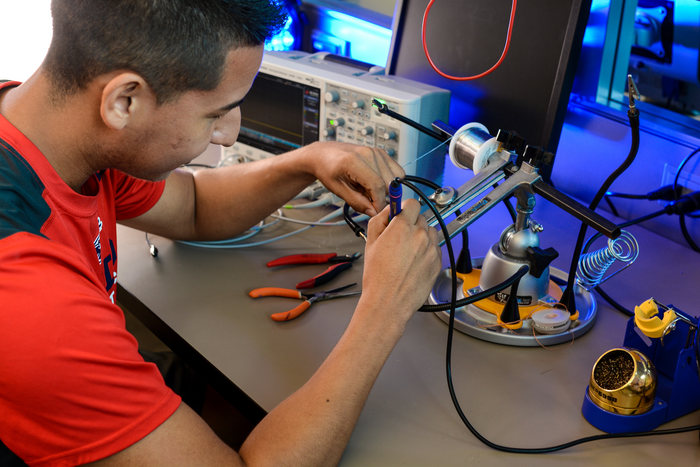For more than six decades, metformin has stood as the frontline therapy for managing type 2 diabetes, its longstanding clinical use grounded in efficacy and safety. Yet, despite its widespread prescription, the intricate biological mechanisms underlying metformin’s glucose-lowering effects have remained elusive. A groundbreaking study led by researchers at Baylor College of Medicine, in collaboration with international scientists, now unveils a novel dimension of metformin’s action: a pivotal brain pathway that modulates its antidiabetic effects. This discovery challenges the conventional liver- and gut-centric perspectives, opening transformative possibilities for diabetes treatment.
Historically, metformin’s primary glucose-lowering role has been attributed to its suppression of hepatic gluconeogenesis—the liver’s production of glucose—thereby reducing blood sugar levels. Additionally, recent studies highlighted the contribution of the gut, with metformin altering intestinal glucose absorption and gut microbiota composition. However, Dr. Makoto Fukuda and colleagues hypothesized that the central nervous system, particularly the brain, might also serve as an essential mediator in metformin’s systemic regulation of glucose metabolism, given the brain’s central role in energy homeostasis.
Focusing on the ventromedial hypothalamus (VMH), a critical brain region involved in systemic energy regulation, the research zeroed in on a small but influential protein, Rap1. This protein acts as a molecular switch within VMH neurons, potentially influencing how the brain senses and regulates glucose balance. The team’s experiments revealed that metformin’s glucose-lowering prowess at clinically relevant, low doses hinges on its ability to inhibit Rap1 activity in the VMH.
.adsslot_WcY6SanuPx{width:728px !important;height:90px !important;}
@media(max-width:1199px){ .adsslot_WcY6SanuPx{width:468px !important;height:60px !important;}
}
@media(max-width:767px){ .adsslot_WcY6SanuPx{width:320px !important;height:50px !important;}
}
ADVERTISEMENT
To unravel this mechanism, genetically modified mice lacking Rap1 selectively in the VMH were fed a high-fat diet to mirror human type 2 diabetes pathology. Remarkably, when these mice received low-dose metformin, the expected reduction in blood glucose was conspicuously absent, underscoring Rap1’s critical role. Notably, these mice remained responsive to other antidiabetic agents such as insulin and GLP-1 receptor agonists, indicating that the impairment was specific to the metformin-Rap1 axis rather than a broad defect in glucose regulation.
Providing striking support for the brain’s central function, the researchers administered minuscule quantities of metformin directly into the brains of diabetic mice. These intracerebral infusions, measured in doses thousands of times smaller than typical oral administration, elicited a potent hypoglycemic effect. This finding suggests an extraordinary sensitivity of brain circuits to metformin and hints at potential targeted therapies that could harness this pathway with minimal systemic exposure.
Delving into the cellular substrates within the VMH, Dr. Fukuda’s team identified SF1 neurons as pivotal responders to metformin’s action. Electrophysiological recordings from brain slices showed enhanced activity in these neurons following metformin exposure, but importantly, this effect was contingent on the presence of Rap1. In mice genetically devoid of Rap1 specifically in SF1 neurons, metformin failed to activate these cells, reinforcing the protein’s indispensable role in this newly discovered mechanism.
This research revolutionizes the prevailing paradigm of metformin pharmacodynamics. While conventional wisdom emphasized liver and gut tissues as primary sites of action requiring relatively high drug concentrations, the brain’s VMH region appears exquisitely sensitive to metformin at far lower doses. This insight not only broadens understanding of whole-body glucose homeostasis but also unveils new therapeutic targets linked to central nervous system function.
Moreover, the discovery that metformin modulates brain pathways has significant implications beyond glucose control. Metformin has been reported to confer neuroprotective effects, slowing cognitive decline and brain aging in various models. The current study raises the intriguing possibility that Rap1-mediated signaling in the brain may underlie these benefits, warranting intensifying investigations into metformin’s neurobiological impact.
The study’s interdisciplinary team, spanning institutions such as Louisiana State University, Nagoya University, and Meiji University in Japan, combined genetic engineering, pharmacology, and neurophysiology to elucidate these novel mechanisms. Their comprehensive approach, supported by multiple grants from prestigious organizations including the NIH and American Diabetes Association, exemplifies the collaborative spirit driving breakthroughs in metabolic research.
As the global burden of type 2 diabetes continues to climb, advancements that pave the way for more precise interventions are urgently needed. Targeting the brain’s Rap1 pathway could herald a new class of therapies that effectively lower blood glucose with potentially fewer systemic side effects. These findings foster hope for next-generation diabetic treatments tailored to exploit this brain-centric mechanism.
Future studies are set to explore the feasibility of selectively modulating this pathway in humans, including the development of brain-penetrant compounds that mimic metformin’s Rap1 inhibition. Insight into the exact intracellular signaling cascades downstream of Rap1 in SF1 neurons will be pivotal, as will understanding interactions with other metabolic regulators.
In summary, this pioneering research uncovers a crucial role of brain Rap1 in enabling metformin’s antidiabetic effects at low doses, fundamentally reshaping our comprehension of this venerable drug’s mode of action. By integrating neuroscience and metabolic medicine, the study charts a promising course toward innovative diabetes therapies, illuminating the brain’s previously underappreciated contribution to systemic glucose regulation.
Subject of Research: Animals
Article Title: Low-dose metformin requires brain Rap1 for its antidiabetic action
News Publication Date: 30-Jul-2025
Web References: Science Advances article
References: Makoto Fukuda et al., Science Advances, DOI: 10.1126/sciadv.adu3700
Keywords: Diabetes, Metformin, Brain, Rap1, Ventromedial hypothalamus, Glucose metabolism, SF1 neurons, Antidiabetic therapy, Neurobiology, Type 2 diabetes
Tags: antidiabetic drug mechanismsBaylor College of Medicine researchblood sugar regulation mechanismscentral nervous system glucose metabolismgut microbiota and diabetes treatmenthepatic gluconeogenesis suppressionmetformin clinical efficacy and safetymetformin diabetes managementRap1 protein role in diabetestransformative diabetes therapiestype 2 diabetes frontline therapyventromedial hypothalamus function






